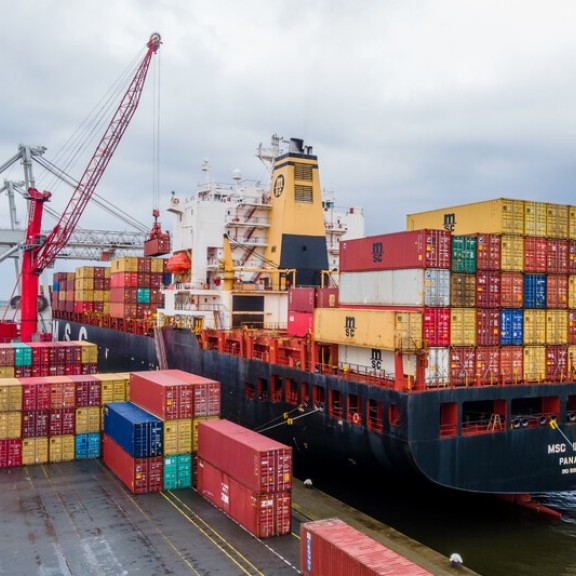
Port of Amsterdam wants to be the frontrunner in transition
In order to realise this ambition, Port of Amsterdam is pursuing seven concrete objectives divided over three strategic choices.
Port of Amsterdam enables customers, cargos and operations to grow more sustainably
This is accomplished by attracting new sustainable activities, but also by linking producers of sustainable energy to existing clients in the port, or by ensuring that one party's residual flow becomes another party's raw material. Port of Amsterdam's objectives include attracting more circular process industry and growing non-fossil turnover.
The shipping process will be smoother, safer and more transparent
To optimally process the flow of goods, information must be exchanged between port authorities, shipping companies, ships, agents, terminals and nautical service providers. In concrete terms, the aim is that at least 95 percent of shipping arrives and departs on time. By cooperating with other Dutch ports as well, the port authority innovates faster and thus strengthens its competitive position.
Port of Amsterdam developes a future-proof port complex
Its infrastructure is the foundation of the port. Port of Amsterdam is developing it with the new sea lock and stronger hinterland connections by water, road and rail. There is a need for sustainable infrastructure, such as shore-based power, hydrogen fueling stations and bunker facilities for new fuels. An energy infrastructure is also needed for the sustainable processing of residues and raw materials. Port of Amsterdam is working on the availability of (green) hydrogen, steam, CO2 and the reinforcement of the electricity network. All this requires the creation of sufficient physical and environmental space, and (external) safety contours.
Creating a better and sustainable port
Koen Overtoom, CEO Port of Amsterdam, 'The great thing about this strategy is that we developed it together with clients and other stakeholders. It has ambition and we are also taking our responsibility as a sustainable, economic engine for the region. After our coal decision in 2017, where we indicated that we no longer wish to tranship coal in the port after 2030, this strategic plan takes us a step further, by setting concrete goals for alternative fuels and non-fossil revenues. This way, we are actively steering towards a sustainable port complex with ever decreasing CO2 emissions. At the same time, this ensures we will remain a strong player in Europe, which connects us to the world and makes us an important economic factor. We are pleased with the support of the City of Amsterdam for this new strategy and are eager to work with our clients to make the port more sustainable and to improve it.'
Find out more on the strategic plan on this webpage.